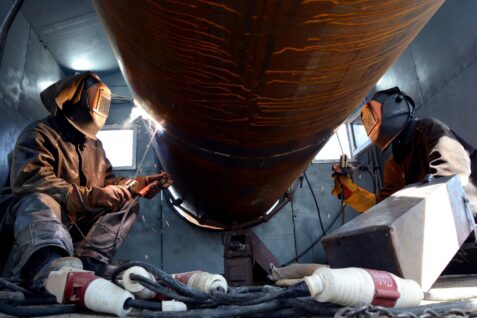A Quick Guide to Confined Space Management

Working in confined spaces poses unique hazards, from asphyxiation to entrapment or engulfment. There is also a risk of toxic gas poisoning, fire and explosion, falls, or other incidents. Yet, only one-third of employers had written confined space entry procedures in 2018—and things haven’t changed much since then.
Confined spaces are common in manufacturing plants and other industrial settings. These may include tunnels, vaults, tanks, pits, pipelines, and more. Unventilated or poorly ventilated rooms fall into this category, too.
Individuals who work in confined spaces can sustain injuries resulting from exposure to noxious fumes, flammable gases, or excessively high temperatures. Plus, they may not have enough oxygen to breathe properly. You also need to consider physical hazards, such as falling objects and slanting walls.
As an employer, it’s your responsibility to anticipate and address these risks. Failure to do so can lead to hefty fines or even lawsuits.
With that in mind, check out this quick guide to confined space management.
Carry out a Risk Assessment
First of all, try to determine whether the space is fully or partially enclosed. Second, check out the ventilation, lighting, and other aspects, such as the means of entry or exit.
Based on this information, carry out a risk assessment and then decide on the next steps. Consider the following risks and hazards:
- The level of contaminants, including dust, airborne gases, and toxic fumes
- The presence of liquids, sawdust, fly ash, and other liquids or solids that may cause engulfment
- A lack or excess of oxygen
- Excessive heat
- Welding fumes and other by-products of the work process
- Restricted entry or exit
- Biological hazards, such as bacteria and fungi
For example, liquid or solid materials can flow into the confined space, leading to asphyxiation. A high temperature, on the other hand, may result in heatstroke.
Pay special attention to the levels of carbon monoxide and hydrogen sulfide. These gases are responsible for most injuries that occur in tight spaces.
Take Preventive Measures
Once you have identified the risks, schedule a meeting with your employees and external consultants. Make sure your staff members are trained to work in confined spaces and have access to emergency equipment.
As a general rule, don’t ask your staff to work in a confined space unless it’s necessary to do so. If possible, try to find a way to get things done without entering the space. This may require investing in new equipment, but you’ll have peace of mind knowing that your employees are safe.
Also, seek ways to mitigate the risks involved. For example, you could replace flammable or combustible liquids with nonflammable solutions. Note that there are safer alternatives to hexane, dioxane, and other toxic solvents.
Provide Confined Space Training to Your Staff
Last but not least, provide confined space training to your employees to help them identify and mitigate risks.
Confined space training covers the proper use of personal protective equipment, entry and exit procedures, gas testing methods, and more. Your workers will also learn how to detect potential hazards and what to do in the event of an accident.
Make Safety Your Top Priority
Whether you’re a small business or a large organization, the safety of your employees should be your top priority. Working in a confined space can lead to lifelong injuries or even death, so don’t take unnecessary risks.
Identify any potential hazards and seek ways to minimize or eliminate them. Remember, we are here to assist you. Contact our experts to find out more about confined space training and discuss your needs.
